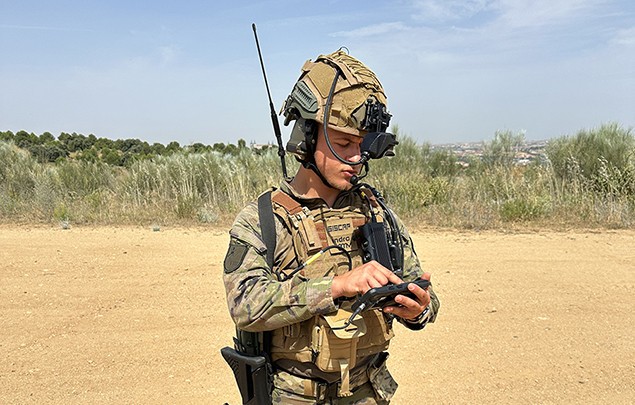SISCAP R&D project completed

On 7 June, GMV successfully completed the operational demonstration of the Spanish Foot-Soldier System (Sistema Combatiente a Pie: SISCAP) project at the Los Alijares maneuver area, next to the Toledo Infantry Academy. This R&D project, overseen by the Directorate General of Weapons and Material (DGAM) of the Spanish Ministry of Defense, focuses on the development and integration of technologies to provide foot soldiers with the appropriate means for effective combat operations.
The SISCAP program is divided into seven subsystems: weapons and ammunition, fire effectiveness (EFU), information and communication (SIC), maintenance, survivability, energy supply (FAL), and readiness (training). The first two phases of the program focused efforts on fire effectiveness, the information and communication system, and the power supply. The rationale was that effectiveness, information superiority, and power autonomy are the most critical aspects of the system. GMV is responsible for the latter two (SIC and FAL) and, in particular, for the electronics and software of the soldier’s main computer (central processing and power distribution unit, UCPE) with command and control capabilities, as well as the integration of these subsystems.
SISCAP is in the consolidation phase and these tests aimed to demonstrate the capabilities of all the subsystems developed in the previous phase, both in a day and night environment. To this end, the progress made in this phase was tested against previous demonstrations, such as increased system autonomy and improved robustness and maturity. New system capabilities were also demonstrated, namely augmented reality and the integration of remotely piloted autonomous systems (RPAS) such as the Black Hornet.
A battery charger (CBS) was also developed. The CBS not only allows the system to be connected to the VCR8x8 vehicle for data, power, and intercom, but also enables system charging using traditional or alternative energy sources such as solar panels.
GMV has been involved in the SISCAP project since 2017, in a joint venture with Indra. After this operational demonstration, phase 1-b of the SISCAP program will come to an end, giving way to future phases in which the number of prototypes is expected to be increased to include the remaining subsystems.